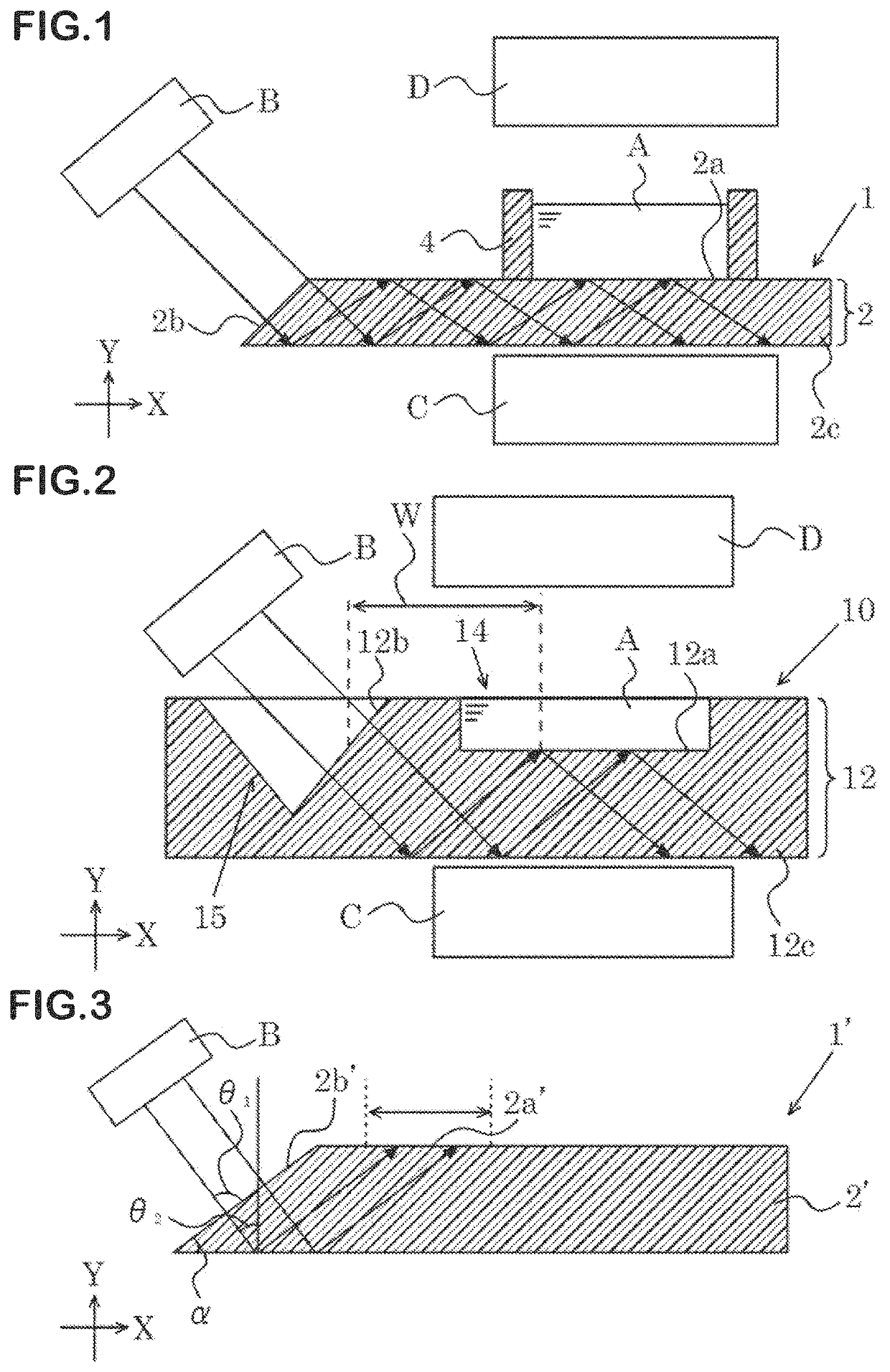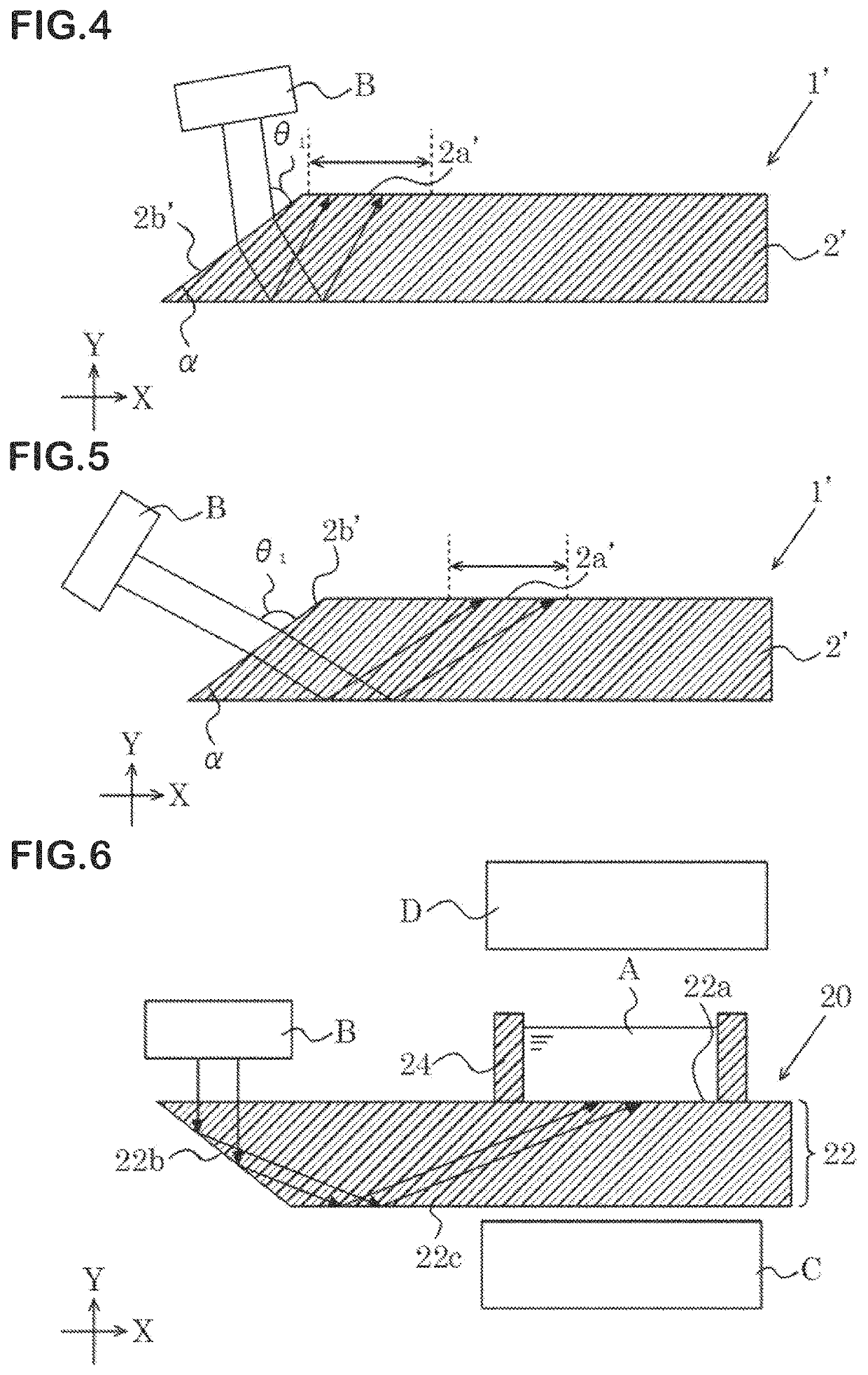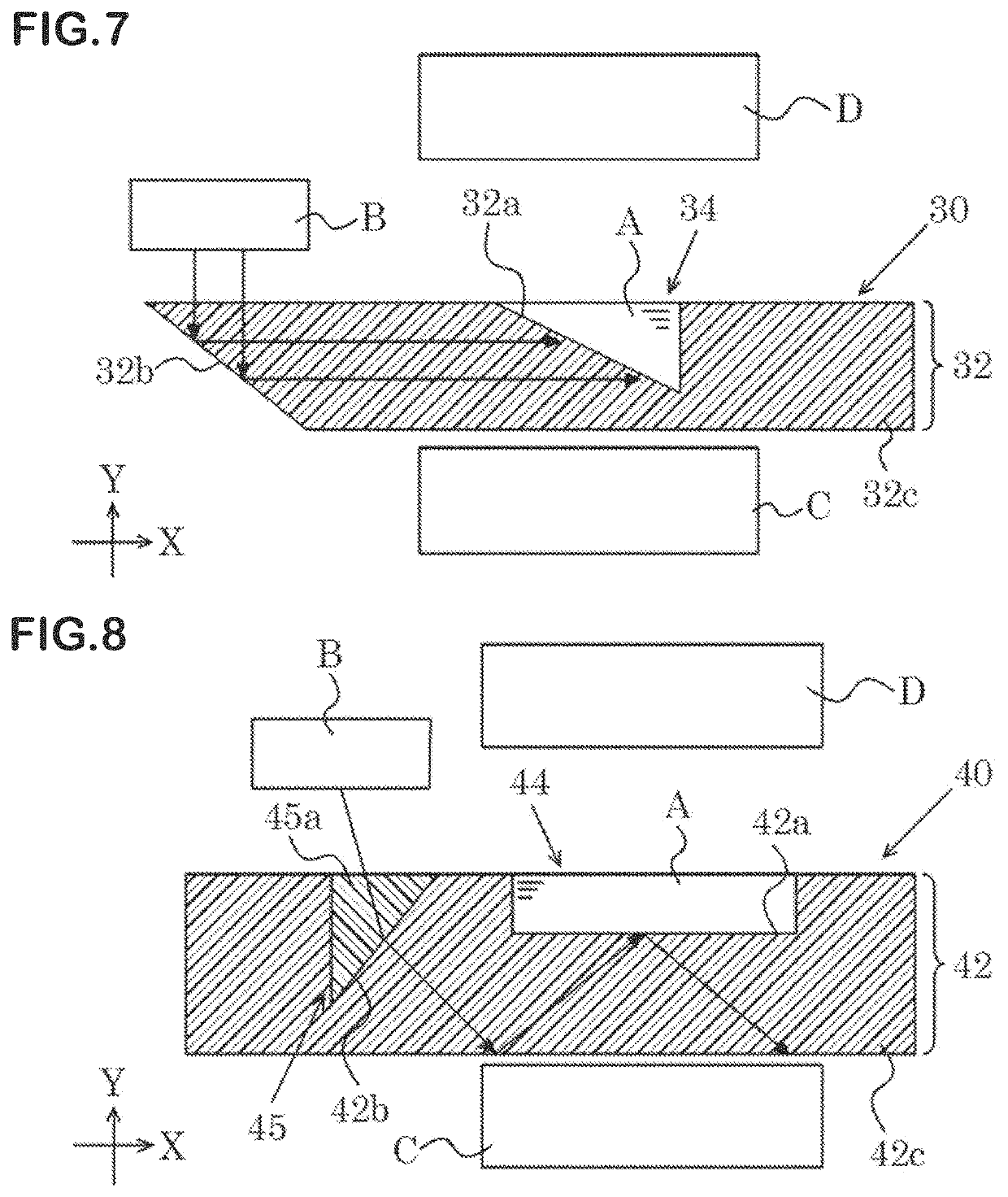Target substance detection chip, target substance detection device, and target substance detection method
a detection device and target substance technology, applied in the direction of fluorescence/phosphorescence, analysis by material excitation, instruments, etc., can solve the problems of increasing the size of the device, increasing the manufacturing cost, and inability to sufficiently draw the target substance toward the localized area, so as to improve the detection accuracy of the target substance, compact and inexpensive manufacturing, and the effect of compact and inexpensive manufacturing
- Summary
- Abstract
- Description
- Claims
- Application Information
AI Technical Summary
Benefits of technology
Problems solved by technology
Method used
Image
Examples
first embodiment
[0480]A first embodiment of the third invention will be described with reference to the drawings. The first embodiment is an embodiment of the target substance detection chip of the third invention.
[0481]As shown in FIG. 26, a target substance detection chip 401 has a light transmissive substrate 402 and an uneven structure imparting layer 403. FIG. 26 illustrates a schematic configuration of the first embodiment.
[0482]The light transmissive substrate 402 has a smooth surface, on which the uneven structure imparting layer 403 is stacked.
[0483]The light transmissive substrate 402 may have a sidewall portion formed to create a box-shaped body with the smooth surface at the bottom, and the box-shaped body may be used as a liquid storage portion to store therein a sample liquid for which the presence of a target substance is to be verified.
[0484]As used herein, the term “smooth” means optically smooth, and the “smooth” surface has a surface accuracy of λ / 2 or less.
[0485]The uneven struc...
second embodiment
[0500]A second embodiment of the third invention will be described with reference to the drawing. The second embodiment is an embodiment of the target substance detection chip of the third invention.
[0501]As shown in FIG. 28, a target substance detection chip 410 has a light transmissive substrate 412, an uneven structure imparting layer 413, and an electric field enhancement layer 414. FIG. 28 illustrates a schematic configuration of the second embodiment.
[0502]The light transmissive substrate 412 has a smooth surface, on which the electric field enhancement layer 414 is stacked. The light transmissive substrate 412 also has a sidewall portion formed to create a box-shaped body with the smooth surface at the bottom, and the box-shaped body is used as a liquid storage portion 415 to store therein a sample liquid for which the presence of a target substance is to be verified.
[0503]The electric field enhancement layer 414 is a layer in which, when one surface is irradiated with light ...
third embodiment
[0510]A third embodiment of the third invention will be described with reference to the drawing. The third embodiment is an embodiment of the target substance detection chip of the third invention.
[0511]As shown in FIG. 29, a target substance detection chip 420 has a light transmissive substrate 422, an uneven structure imparting layer 423, and an electric field enhancement layer 424, and a liquid storage portion 425 is formed as an optional configuration in the light transmissive substrate 422. FIG. 29 illustrates a schematic configuration of the third embodiment.
[0512]The target substance detection chip 420 differs from the target substance detection chip 410 in that the uneven structure imparting layer 423 is formed on the light transmissive substrate 422 and the electric field enhancement layer 424 is formed on the uneven structure imparting layer 423.
[0513]Specifically, the target substance detection chip 420 includes: the light transmissive substrate 422 having a smooth surfac...
PUM
| Property | Measurement | Unit |
|---|---|---|
| distance | aaaaa | aaaaa |
| thickness | aaaaa | aaaaa |
| thickness | aaaaa | aaaaa |
Abstract
Description
Claims
Application Information
 Login to View More
Login to View More - R&D
- Intellectual Property
- Life Sciences
- Materials
- Tech Scout
- Unparalleled Data Quality
- Higher Quality Content
- 60% Fewer Hallucinations
Browse by: Latest US Patents, China's latest patents, Technical Efficacy Thesaurus, Application Domain, Technology Topic, Popular Technical Reports.
© 2025 PatSnap. All rights reserved.Legal|Privacy policy|Modern Slavery Act Transparency Statement|Sitemap|About US| Contact US: help@patsnap.com



